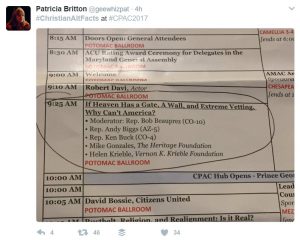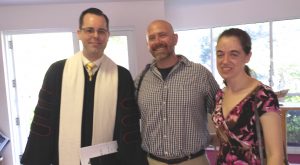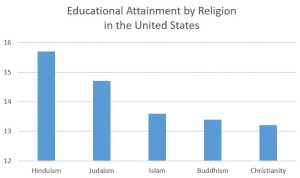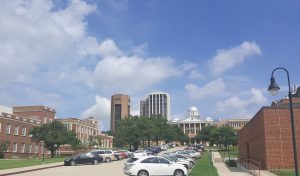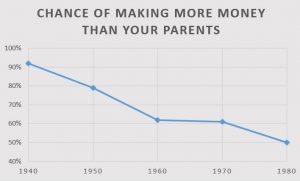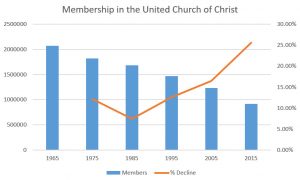When did you first realize that the so-called American Dream has died? Or, put in nicer terms, when did you realize that the American Dream as understood in a popular sense is realistically attainable for a shrinking portion of those living within the borders of the United States? Perspective A few hours before writing this post I had a lengthy conversation with an older Baby Boomer. This person is greatly concerned that the current President is providing many people with Read More …
Trends
The Immigrants Creed (#1672)
I have heard about immigrants more often this year than any year since I worked in the field of refugee resettlement in the 1990s. As a student of history, I know that the country I have called home for my entire life - America - is a land of immigrants. Without immigration, I would not reside here today. As a person of faith, I am committed to welcoming, valuing, and loving all people. As a Christian love of neighbor is a fundamental faith practice. The United Church of Read More …
Christian Alternative Facts (#1671)
The term "alternative facts" is one of the most popular phrases of 2017. On Friday evening I found that it was being applied to Christianity on Twitter with the hashtag #ChristianAltFacts. I was quickly drawn in by a few remarks by academics and lingered to appreciate the wisdom of a wide range of tweeters. "Jesus thinks your gun is awesome. #ChristianAltFacts" --@evandeneykel (Eric Vanden Eykel, Assistant Professor of Religion, Ferrum College) "Nothing important happened after Read More …
Americans Feel More Positive About Most Religions (#1670)
According to research conducted by the Pew Research Center, between June 2014 and January 2017, American views shifted to become more positive about about most of the world's great religions. More specifically, survey respondents were asked to to rate a variety of groups on a “feeling thermometer” that ranged from 0 to 100 (with higher numbers reflecting warmer or more positive feelings). Respondents warmed to several religions during this two and a half year period, including Read More …
The Disappearance of Young Pastors (#1667)
Last week I saw a link to Kate Shellnutt's article, "Only 1 in 7 Pastors is Under 40" appear on my social feeds a few times before I clicked through to read it and to learn about the latest research on the topic. The research was conducted by the Barna Group and Pepperdine University. It included 14,000 pastors. Findings include: Average Age of Protestant Senior Pastors 2017: 54 1992: 44 Young Senior Pastors 2017: Only 1 in 7 is under age 40 Getting Personal This topic is of Read More …
The Least Educated Americans: Christians (#1664)
A few weeks ago the Pew Research Center published a detailed chart showing a nation by nation breakdown of the educational attainment of those identified with select world religions. United States In the United States, the average educational attainment of all adults aged 25 and older was 12.9 years. In rank order by average educational attainment in number of years the report shows: Hindus - 15.7 Jews - 14.7 Muslims - 13.6 Buddhists - 13.4 Read More …
Top 5 Posts of 2016 (#1661)
I appreciate each and every one of my readers. Your activity on my blog indicates that the most read So What Faith posts of the year are (according to the number of page views during this calendar year among all posts made during 2016) are My Transition from Professor to Student Search for a Church: 9 Months and Counting Top 10 Books of 2016 Search for a Church: The Final Four In Politics and Beyond, #LoveUltimatelyWins Previous Lists Check out my top posts of the year for the Read More …
The Fading American Dream (#1659)
Are you living the American Dream? Most people consider several variables when constructing a personal response to whether or not they and their families are living the American Dream. Rather than address all such factors, I invite you to consider the economic component. A couple of years ago I shared information that suggested the economic piece of living the American Dream required an income of at least $130K for a family of four. Yesterday I read a NY Times editorial that Read More …
How Important is Religion in America? (#1658)
Imagine if all American adults were represented by a town comprised of only 100 people. In this small community, what would religion look like? Earlier this month the Pew Research Center published an article by Aleksandra Sandstrom and Becka A. Alper that answered the question by providing infographics built from data about religious beliefs and behaviors based on the 2014 U.S. Religious Landscape Study. For the question, "How important is religion?" the respondents Read More …
Dwindling Membership: The United Church of Christ from 1965-2015 (#1654)
While I consider myself a post-denominational follower of the Way of Jesus, I have spent the most of the last six years involved in the life of congregations affiliated with the United Church of Christ. This Mainline Protestant denomination has experienced a significant decline in membership over the last 50 years from over 2 million members in 1965 to under 1 million members in 2015. The graph at right shows the denomination's total membership by year in blue and the percent Read More …


